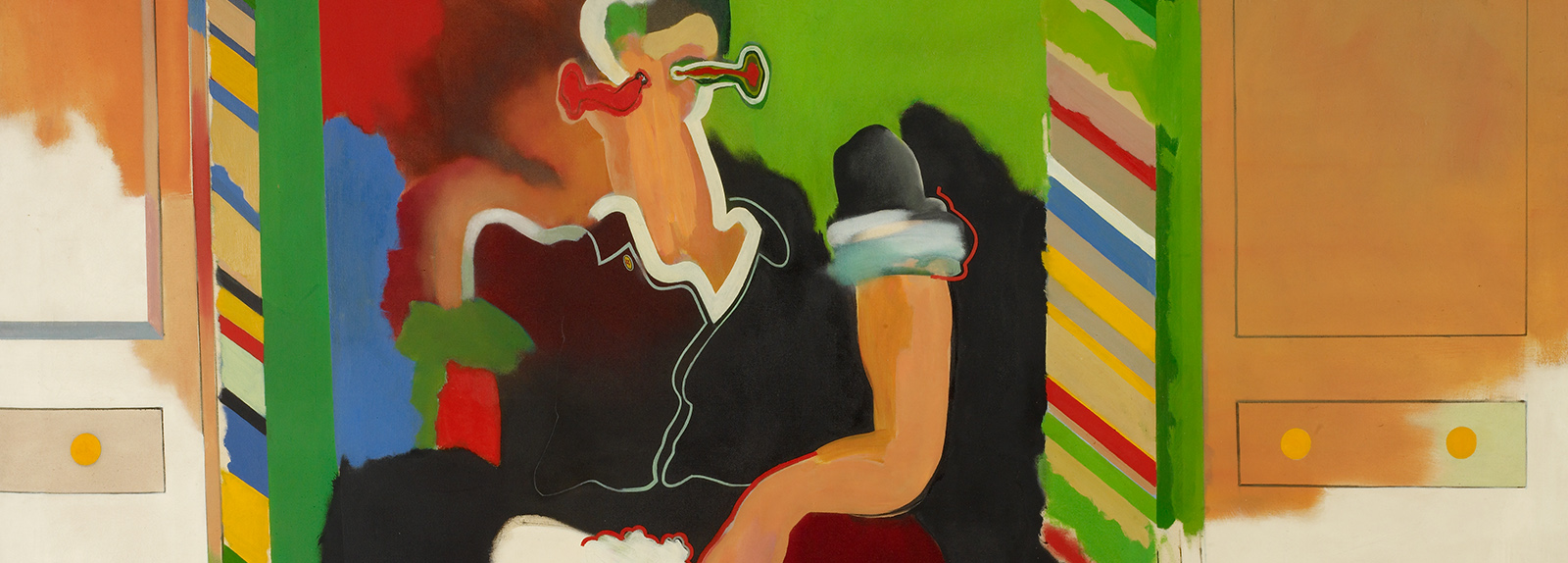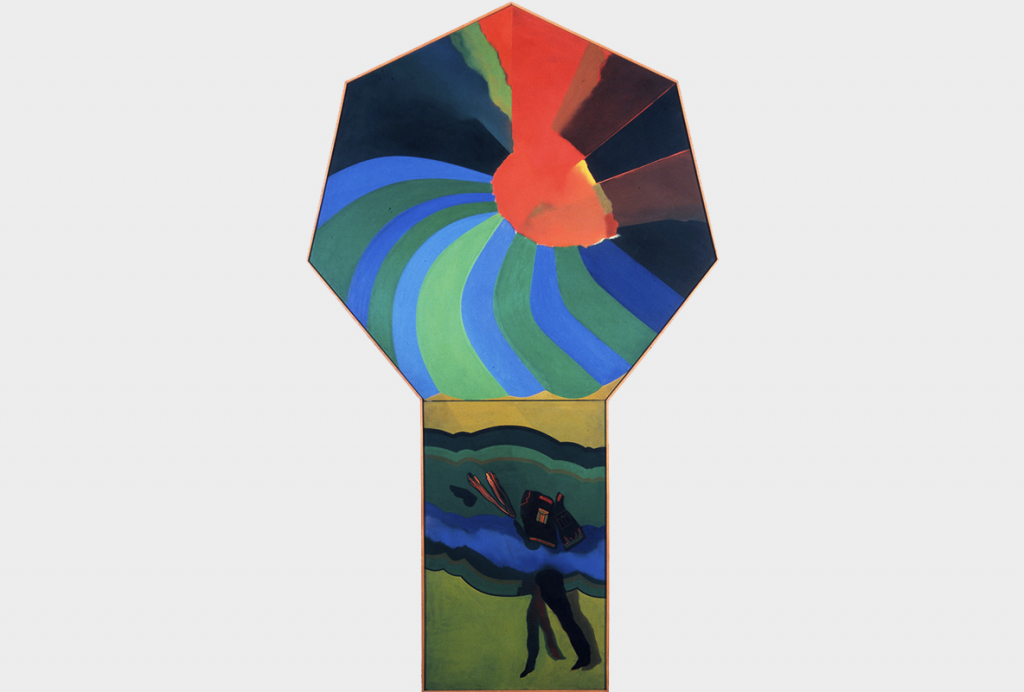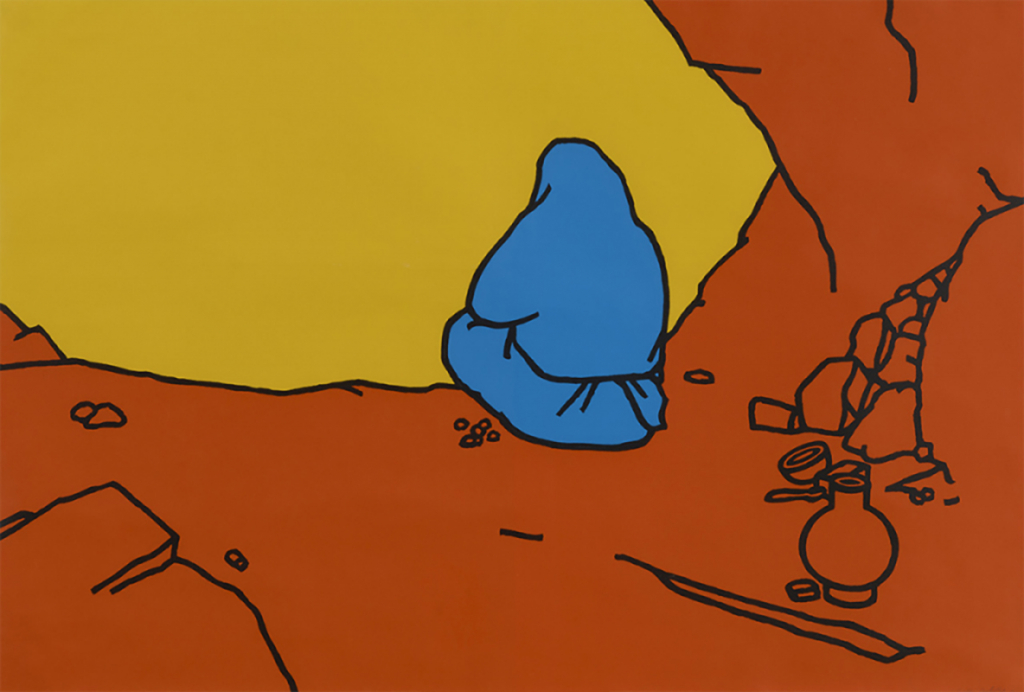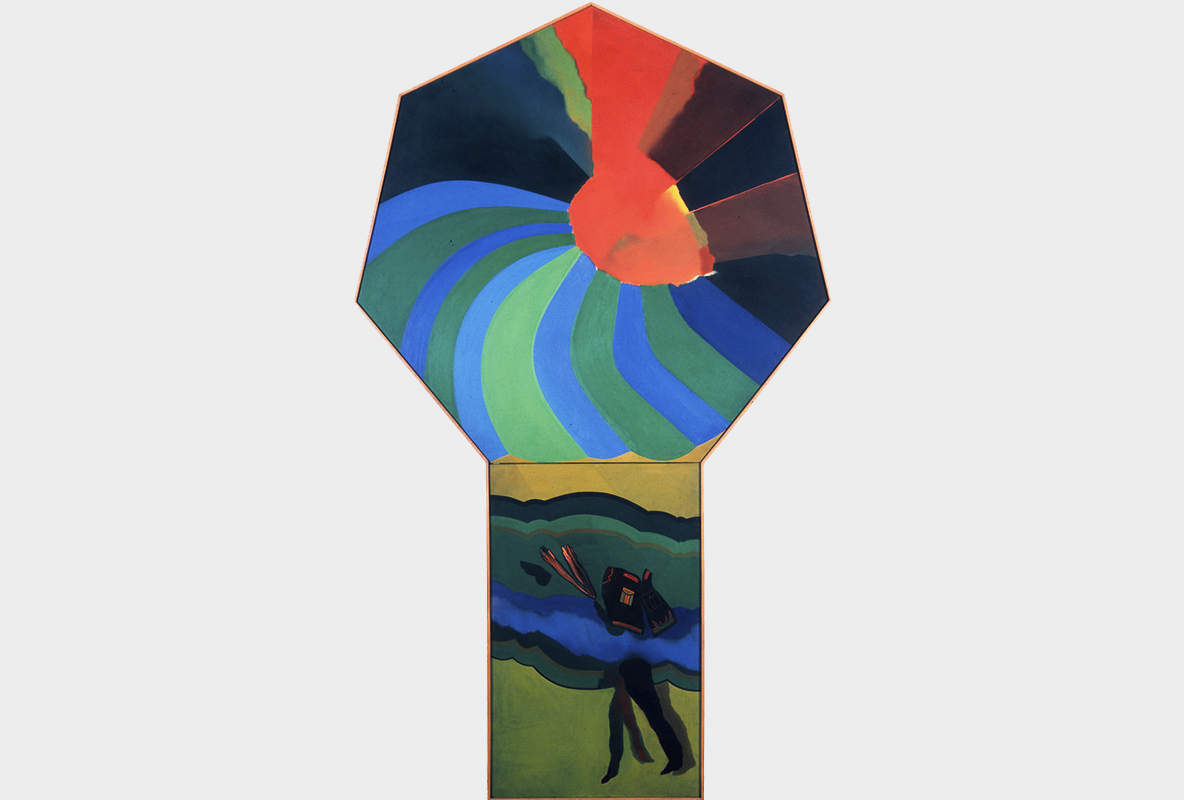

Pop, yes or no?
Artists usually associated with the most famous phase of British Pop from the beginning of the 1960s, such as Allen Jones and Patrick Caulfield, always rejected the label ‘Pop’.
In a period still very early on in his career, Allen Jones became fundamentally interested in colour and in compositions which showed the superimposition of masculine and feminine attributes, considering that art resulted from the interaction of genders. The choice of cut out canvases allowed him to go beyond the traditional two-dimensionality of painting, which is represented by the octagonal canvas and which constitutes the top part of this work, with the creation of a helicoidal movement of a form suspended from it. It is the transcription of what could be a pop motif – a parachutist – in a language which resumes the simultaneous contrasts of the Delaunays’ painting, from the avant-garde of the first decades of the 20th century.



Patrick Caulfield opts for a painting with large flat colour surfaces outlined in black, quoting the modernist painting of Fernand Léger and the techniques of the comic strip. The artist is often inspired by motifs popular in other periods, such as the European taste for orientalised material and visual culture typical of the late 19th century. Daggers and ceramics are represented in a figurative manner next to the painting of chocolate box covers. A meditation on simultaneous (chromatic) contrasts, this painting of a blue hermit sitting with his back turned to the viewer in an ochre grotto open to a yellow void is a painting designed to attract.


